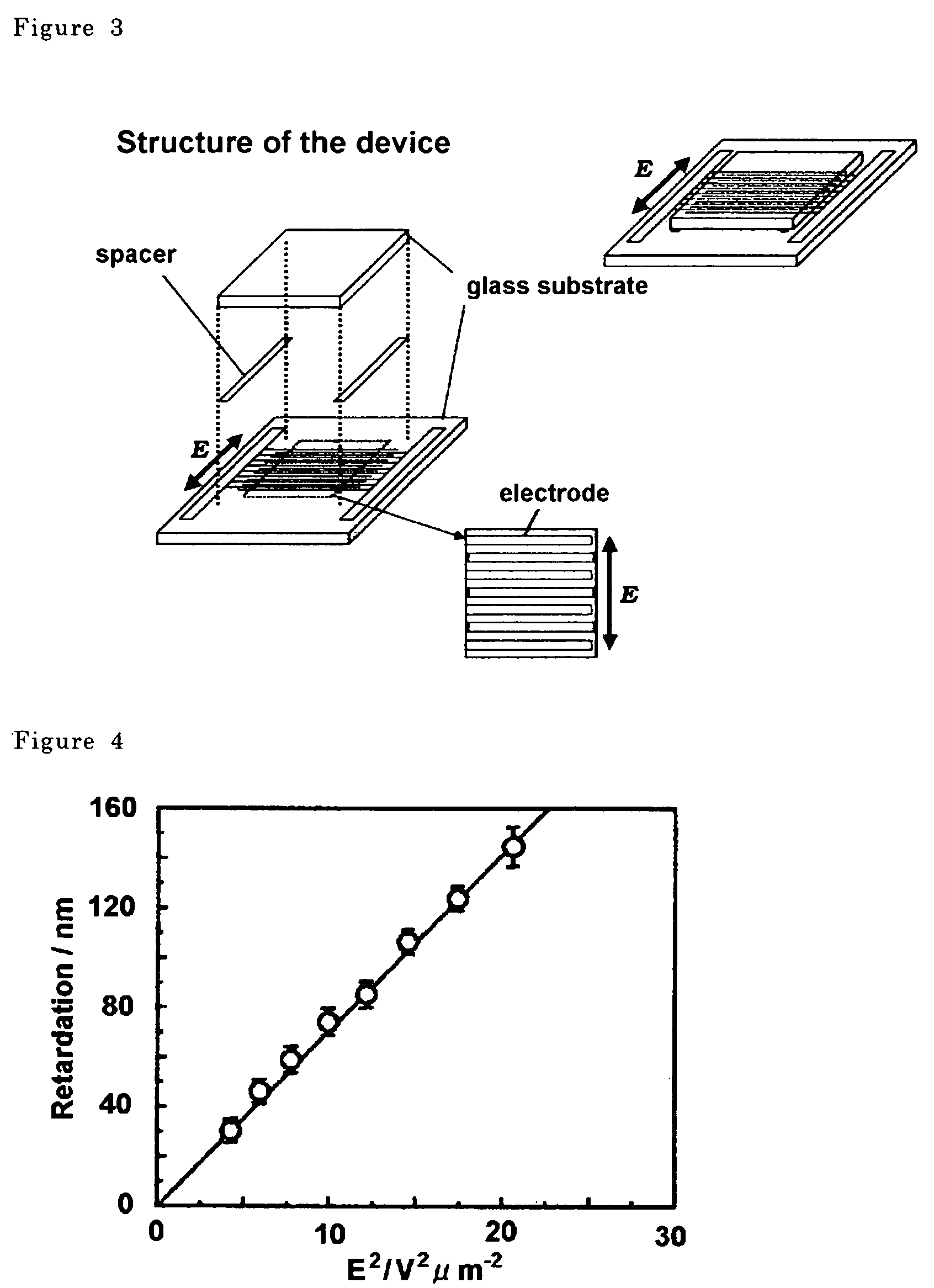Liquid crystal display device
a display device and liquid crystal technology, applied in liquid crystal compositions, instruments, chemistry apparatus and processes, etc., can solve the problems of limiting the application of dynamic picture displays used for television, increasing the cost of declining yields, and poor display qualities
- Summary
- Abstract
- Description
- Claims
- Application Information
AI Technical Summary
Benefits of technology
Problems solved by technology
Method used
Image
Examples
example 1
[0055]JC1041-XX (Chisso), a fluorinated liquid crystal blend used as the liquid crystal, 4-cyano-4′-pentylbiphenyl (5CB) (Aldrich) and ZLI-4572 (Merck) used as a chiral agent were mixed and heated. The individual proportions were 47.2 / 47.2 / 5.6 (% by mole) as shown in the table below. Monofunctional 2-ethylhexyl acrylate (EHA) (Aldrich) and difunctional RM257 (Merck) photo polymerizable monomers were added to the mixed solution to form a polymer network in the mixed solution. The monomer composition ratio was EHA / RM257=70 / 30 (% by mole). Furthermore, 2,2-dimethoxyphenylacetophenone (DMPAP) (Aldrich) was added as the photo polymerization initiator to obtain a uniform solution. The monomer concentration in the mixed solution was referred to as α, and the α was varied from 4 mole % to 15 mole %. The DMPAP was prepared so that it was present at 5% by mole based on the monomer mixture.
[0056]
TABLE 1MonomerPhotoinitiatorLiquid CrystalSampleEHARM257DMPAPJC1041-XX5CBZLI-4572Molar ratio / mol %7...
example 2
[0063]In order to control the diffraction wavelength of the BP that appeared to 380 nm or lower, a chiral agent CB15 (Aldrich) was introduced into a mixed liquid crystal (JC1041-XX / 5CB / ZLI-4572). The composition of each (photo polymerizable monomer / liquid crystal) composite sample prepared is shown in Table 2.
[0064]
TABLE 2MonomerPhotoinitiatorLiquid CrystalSampleEHARM257DMPAPJC1041-XX5CBZLI-572CB15Molar ratio / mol %703037.237.25.620Composite6.5 mol %0.33 mol %93.2 mol %
[0065]The temperature dependence of the reflection spectrum for a (photo polymerizable monomer / liquid crystal) composite system is shown in FIG. 7. In order to prevent the initiation of photo polymerizable monomer polymerization by the examination light source (365 nm), the scanned wavelength zone was from 700 nm to 375 nm. The reflection spectrum clearly indicated that the BP appearance temperature range for the composite system was about 2.5° K.
[0066]The inserted figures in FIG. 7 were polarized light microscope imag...
PUM
| Property | Measurement | Unit |
|---|---|---|
| diffraction wavelength | aaaaa | aaaaa |
| response time | aaaaa | aaaaa |
| distance | aaaaa | aaaaa |
Abstract
Description
Claims
Application Information
 Login to View More
Login to View More - R&D
- Intellectual Property
- Life Sciences
- Materials
- Tech Scout
- Unparalleled Data Quality
- Higher Quality Content
- 60% Fewer Hallucinations
Browse by: Latest US Patents, China's latest patents, Technical Efficacy Thesaurus, Application Domain, Technology Topic, Popular Technical Reports.
© 2025 PatSnap. All rights reserved.Legal|Privacy policy|Modern Slavery Act Transparency Statement|Sitemap|About US| Contact US: help@patsnap.com



